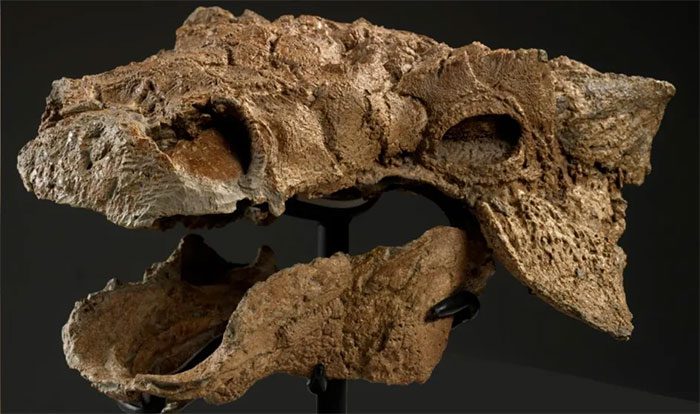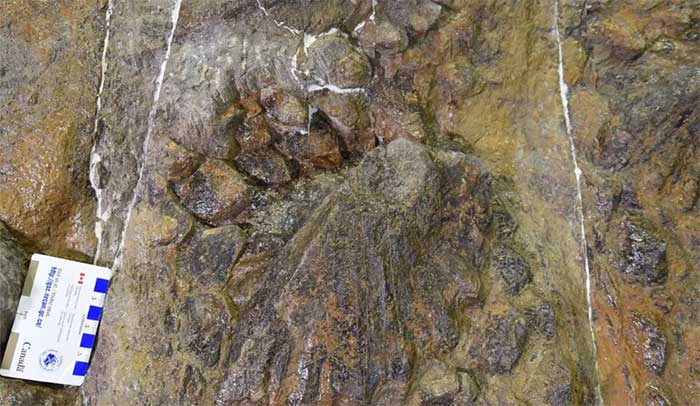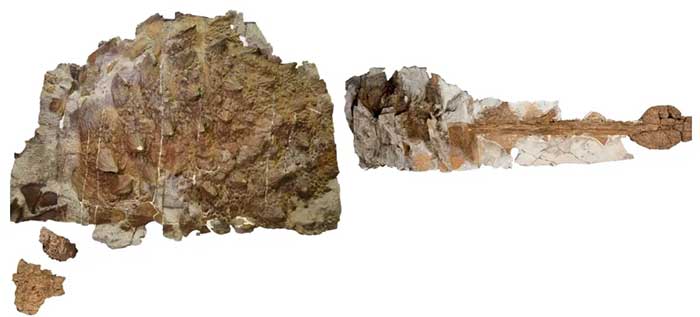Ankylosaurus, also known as the armored dinosaur or tail club dinosaur, likely used its tail as a powerful weapon to engage in conflicts with others, in addition to warding off predators like Tyrannosaurus rex.
A well-preserved fossil of the tail club dinosaur – a herbivorous dinosaur that lived 76 million years ago – has changed how scientists understand these creatures and the use of their unique tails.

Skull fossil of Ankylosaurus.
Research indicates that the spikes and side plates of the dinosaur appear to have been broken and healed throughout its life stages. These injuries may have occurred during conflicts with other dinosaurs.
Ankylosaurus had bony plates of various sizes and shapes all over its body, along its sides, acting like large spikes. Scientists believe that Ankylosaurs may have used their tail clubs as weapons to assert social dominance, establish territory, or even during combat for mates.
 Ankylosaurs may have used their tail clubs as weapons.
Ankylosaurs may have used their tail clubs as weapons.
Ankylosaurs fought with one another using their tails in a manner similar to how modern animals like deer and antelope use their antlers and horns. Ankylosaurs were also considered rivals to the Tyrannosaurus rex and other predators that walked on two legs.
These tails could reach up to 3 meters long, lined with sharp spikes along both sides. The tail’s tip was reinforced with bony structures, creating a club that could swing powerfully like a hammer. Fossils of their skull and tail were discovered in 2017 from a dig site in the Judith River Formation in northern Montana. They were so well-preserved that remnants of skin and bony armor were still intact on the back and sides of the dinosaur.

The fossil includes the head, body, and tail of the dinosaur.
This tail club dinosaur had a fierce appearance, frequently engaging in fights and conflicts with other animals, resulting in numerous scars. They used their tail clubs to deliver powerful blows to opponents, although most people think they used their clubs primarily against predators.
However, the injuries they left behind tell us about how they might have behaved and interacted with other species in their ancient environment.





















































